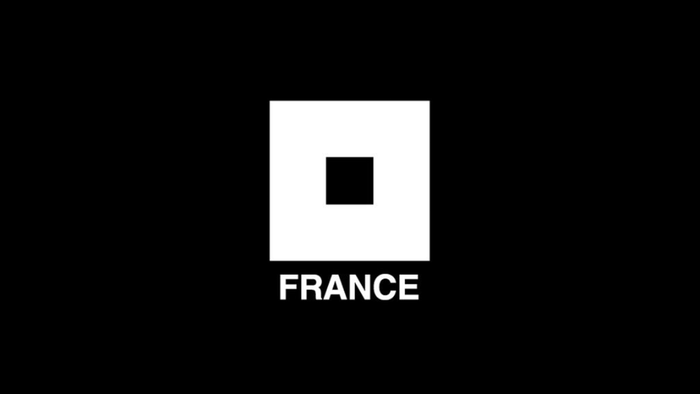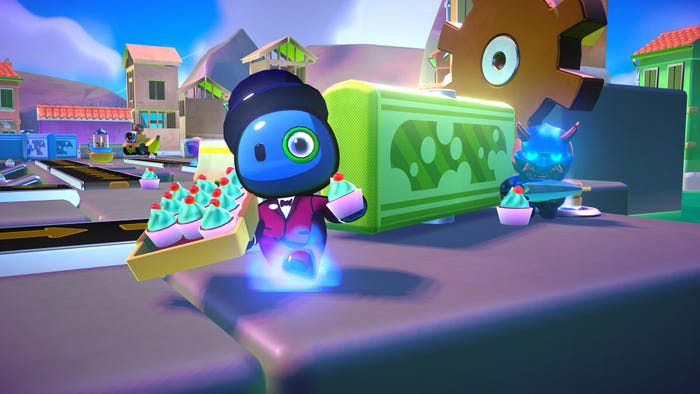The Heist has two players working together to rob a bank -- one in VR navigating the bank, and the other hitting switches and connecting cords on a control panel, trying to help the VR player along.

The 2017 Game Developer's Conference will feature an exhibition called Alt.Ctrl.GDC dedicated to games that use alternative control schemes and interactions. Gamasutra will be talking to the developers of each of the games that have been selected for the showcase. You can find all of the interviews here.
The Heist has two players working together to rob a bank -- one in VR navigating the bank and describing problems they encounter, and the real-world player hitting switches and connecting cords to a control panel, trying to help the VR player along.
With one player in VR and the other assisting with a real control panel, The Heist forces players to talk and work together, using two very different means in tandem to solve puzzles and get rich.
Developed by Michał Wróblewski, a developer with eight years of experience from SetApp, The Heist will bring the fun of fiddling with real buttons, as well as the challenge of dealing with puzzles from two different points of view to the ALT.CTRL.GDC exhibit next week.
Gamasutra reached out to Michał Wróblewski to learn more about the dual setup, how to design puzzles that need two people working separately to solve them, and what drew them to create this unique team-up style of play.
What’s your name, and what was your role on this project?
My name is Michał Wróblewski, some sources may lead to VRóblewski. I run a VR division in Setapp. My role was to lead the project’s vision right from the simple idea at the beginning. I worked with the dev team, discussing and verifying what works and what doesn’t.

How do you describe your innovative controller to someone who’s completely unfamiliar with it?
Do you know that scene from The Matrix where Neo is talking with the operator looking for a telephone box? They both need to rely on each other, but they can only talk to get out of The Matrix because they don’t see what the other player sees. The controller itself is the tool of the operator and the other player is in a Virtual Reality (VR) headset.
The aim of The Heist is simple - the VR player has to break into a bank’s vault and the player with the controller can act on things in VR. The controller itself is a box with buttons, cables, and lights that’s connected to the VR world. Players need to talk to each other to figure out by trial and error all of the puzzles in the game. The feeling of the game is pretty similar to a real escape room because there’s a clear goal, puzzles to solve, and no instructions.

What's your background in making games?
I've spent almost 8 years now in professional game development. It all started a few years earlier when I got hooked by the magic of Flash - its accessibility for anyone without any knowledge who was full of curiosity. I got myself a book about creative ActionScript and just started. I spent some time learning to code and doing creative experiments. I started making games and other Flash stuff with BlackMoon Design. There was Scribbles and Crazy Pandas among the few public ones.
Then I worked with Synergy-IT on games for DICE+ controller. Then I landed in Setapp to work on mobile title Out of the Box and to open R&D-like VR division. We’ve released Neverout, Overflight, and Escape Velocity for Gear VR in 2016.
What development tools did you use to build The Heist?
The VR side of The Heist was #madewithunity. All of the assets were made in-house. For 3D assets, our graphics designer used LightWave and Substance Painter. As the game was made for Samsung Gear VR, we wrote native Java code to connect via Bluetooth with the controller. But that’s only one part of the game.

What physical materials did you use to make it?
The very first version of the game’s controller was made for tablet, so it helped us iterate over the ideas very rapidly. The first physical version of the controller was based on Arduino with a Bluetooth module and lots of wires, buttons, and cables. It’s pure C software making it work. Now, in the second version, we wanted to build 5 of them, so there’s a custom board designed specifically for the controller. The cover is made with black matte acrylic sheet cut and engraved with lasers.
How much time have you spent working on the game?
It took us around 2 months to develop The Heist with the physical controller. Thanks to mentioned rapid iteration, we settled on puzzles very early in the development so we could focus on polishing the puzzles without breaking basics.
How did you come up with the concept?
We had that idea to make a cooperiative game. We were inspired by great games like Keep Talking And Nobody Explodes and I Expect You To Die, but also the movie The Matrix. Local co-op games have something magical we wanted to make, and having that feeling being in VR multiplies that.
VR itself gave us one rule that helped us shape the game’s rules - players don’t see what the other player sees. So, they focus on their own side and ask other player for help. It also fascinated us how people play with buttons and wires, given the challenge of a puzzle to solve. That’s what pushed us to make a physical panel.
We’ve also got a concept of making a real escape room with multiple devices that connected to each other with gauges, levers, and even more buttons and wires. We call it Smart Home Went Wrong.
What challenges did you face in having a puzzle split between two players? How did you ensure communication was needed to solve The Heist's puzzles?
The main one was finding a balance between what needs to be done or figured out by each of the players. We started with some non-obvious puzzles, but quickly found out that, as a starter, it was anything but fun. We wanted a game that anyone, even without any instructions, could finish and have fun playing. We highly valued instant feedback right after button was clicked or cable connected - it made it easier for players to connect the dots and to discover the rules.
One more, pretty funny thing is that, especially after players swapped, some players got overconfident about how the puzzles worked. It lead them to blindly go in the wrong direction for a longer time without leaving bad assumptions behind. Some players dominated the team and told other players what to do, even if they had no idea. But hey, isn’t this how bad teamwork works in real life?
How do you create puzzles that can be solved only with work from two very different interfaces? How do you make that complexity possible to unravel through talk?
Making puzzles got easy once we established the roles of the players. Neo and the operator was a perfect example to understand it. Let’s just make up a clear goal (break into a bank's vault), make 2 different roles for players that can’t share the same place (thief and operator), and for puzzles, we relied on direct feedback to spark a conversation.
Each of the puzzles can have multiple possible rulesets to figure out. We started with mechanical elements, and imagined what action could cause this or that outcome, and how it can match with the VR world to solve a puzzle.
Why build a game around communication between players? What was it about a shared puzzle-solving experience that made you want to make this game?
As mentioned before, specifics of VR games made players isolated from what each of them see - it kind of naturally made us rely on communication. We were inspired by magic we’ve found in Keep Talking And Nobody Explodes, where one player in VR defuses a bomb and the player(s) outside have instructions to help them in a race against time and stress.
What we wanted to change was to drop the instructions and let players figure them out by themselves. To go more into an escape room type of experience, like I Expect You To Die, where the player is put into a scenario and is expected to solve all of the puzzles by trial and error.
During playtesting, I discovered that communication was a strong factor that connected two players. It’s like a dark restaurant, you need to talk to someone for 10-20 min, and after that time you’re like friends.
How do you think standard interfaces and controllers will change over the next five or ten years?
Valve’s efforts into exploration of input controllers in VR makes me feel safe about it. One thing I want to see in the near future is hand tracking for mobile VR headsets - it’s the controller we carry all the time, it’s pretty accurate, and we’re used to use hands to manipulate things.
In 5-10 years I would like to see haptic feedback solved. I know it won’t augment our world with objects we can feel, but let’s see what the future brings. Real world feedback adds a lot to make our brains accept the virtual world - just look at The VOID. If your brain accepts the world around you, you get immersed and that’s what we aim for. It’ll be super hard to bring those kinds of experiences to your home VR setup, and I think that world need VR arcades where you can feel it.
About the Author(s)
You May Also Like








